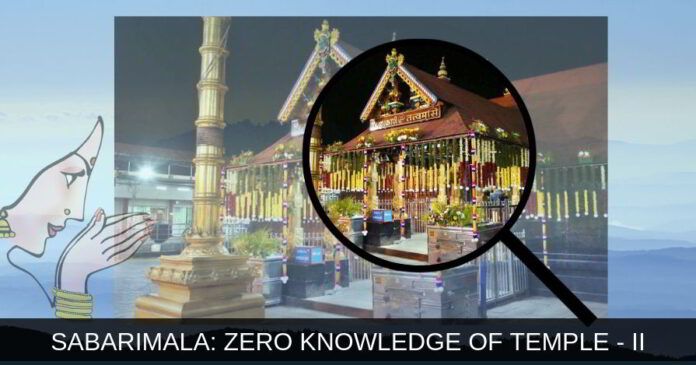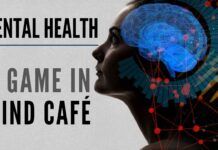
Part 1 of this series can be ‘accessed ‘ here. This is Part 2.
Effect of negative ions on menstruating women.
Menstruation, a process vital for the procreation of our human race is the least researched subject around the world. It is not about a few days of the menses flow, but it is a continuous process of some change happening in the woman’s body throughout her menstruating life. In the first week of the menstrual cycle, there is a predominance of Kapha dosha, which increases the vitality of the person. During ovulation and after, Pitta dosha becomes predominant which is manifest as acne or pimples in the face (for some) and many become irritable in nature.[i] In pH terms, Pitta is low in pH value indicating higher levels of positive ions! With the onset of menses flow, there is a continuous generation of positive ions around the woman due to the dead tissues getting flushed out. Positive ions (cations) are associated with dead tissues that enhance bacterial activity. The promotion of anion (negative ion) sanitary napkins as a remedy to reduce the discomfort and bacterial effects during menses is proof enough that science recognises the generation of more positive ions during menses.
The primary feature of remaining outdoors in seclusion from everyone, which is looked down upon with disdain today, has a positive effect of offering an anion-rich environment
This raises a question why not allow women into temples, the source of constant generation of negative ions – during her menses so that she can be greatly relieved of the pain, discomfort and mood swings caused by low pH aided positive ions in her body. This can be answered in two ways.
- Temples have been found to be negative ion generators for the benefit of the entire community with the entire community taking part in the generation of the same by worshipping in the temple. Suppose there are 100 persons in a community where at any one time, 5 persons may be having menses. If those 5 persons are going to enter the temple, the high level of positive ions in them can mess up with the ‘negative ion-only’ atmosphere of the temple. It is like mixing a drop of poison in a pot of milk. The temple nurtured by a community for the well-being of the community cannot be disturbed of its composition for the sake of the few, particularly when other means are there to cater to their needs at those times. By staying away, if the anion-purity of the temple can be maintained, then that is the best way in the interest of the masses.
- The generation of positive ions associated with menstruation is part of the natural process of removing the dead tissues from the system. In such a scenario, exposure to high levels of negative ions (as in a temple) would be against this natural and necessary process. So a counter therapy should aim at reducing the adverse physiological and psychological effects of positive ions. It is here the traditional practices of Rajaswala Paricharya sound very much logical and far advanced than the present level of our knowledge of menses related problems. The traditional practices include remaining outdoors and secluded from others, rest from all physical activities, specific diet, not to have a complete bath etc. A study done on 30 women to test the effect of these practices of Rajaswala Paricharya found an improvement in relief to issues related to physical and psychic well being[ii].
With the knowledge of the effect of negative ions, we can deduce the extent of exposure to negative ions by the menstruating women to get relief from her physical and mental stress while at the same time not tampering with the natural process of removal of dead material associated with positive ions.
The primary feature of remaining outdoors in seclusion from everyone, which is looked down upon with disdain today, has a positive effect of offering an anion-rich environment. The maximum concentration of positive ions is found inside houses today and it could have been so in olden times too. By offering the menstruating woman a separate room, she is exposed to the free flow of air and therefore to the anion-rich atmosphere. About 85% of anions are absorbed through our skin. Just by keeping away from people and remaining outside, she is able to get the refreshing ions needed to reduce her stress. The terminology used in Tamil for menses is ‘veLi’, meaning outside or outdoors – which is self-descriptive of a state of wellness in terms of ion-therapy for a menstruating woman.
It is known that vigorous exercise reduces the pH level thereby increasing the positive ions. Seen from this perspective, one can understand why the menstruating woman was exempted from doing all physical activities.
Sabarimala temple is situated on a mountain surrounded by dense forests. The location itself is brimming with a heavy dose of negative ions
The supply of negative ions comes from her foods which are highly alkaline. This food is collectively known as ‘Havishya anna’ – the food used as oblations in yajna! It includes rice, moong, sesame, jaggery, ghee, cow’s milk etc. Sceptics who find fault with the tradition of the menstruating woman keeping away from the temple and puja should ponder over the fact why she is asked to take the yajna-food during her menses. Doesn’t this convey that the body of the menstruating woman is a yajna Kunda and menses blood is like Agni, that she has to offer Havishya anna to get maximum positive benefits? It is a practice in Tamilnadu even now to offer jaggery mixed sesame balls to the young girls during their menses. This quickens the process the easy and painless flow while supplying negative ions to her body. Even now there are women who are wary of taking sesame sweets while nearing their menses date, for the reason that sesame induces menses.
Positive ions during death.
A bath generates negative ions but also causes exertion which is related to positive ions. That is why Rajaswala Paricharya recommends incomplete bath to her. The traditional practices with reference to bath under different circumstances further reinforce the ion- theory in ashaucha (impurity). Death is associated with positive ions. The wail and sad state of mind of the near and dear also generate positive ions. The extended period of ‘impurity’ for the close relatives of the dead is better understood when seen through the ion-theory. It will take them for a while to come to terms with the loss of the person and stop crying. As long as they are crying, they will be surrounded by positive ions only which will increase the mental irritation of everyone around them. So it is better for these people to remain secluded for a while after the death of their dear one so that the ion balance for others would not be upset. This is similar to why women stay from temples during menses.
This also justifies why a temple remains closed when someone dies in close vicinity. As long as the body is lying in state, positive ions keep growing around. (Cell death is associated with ion movement)[iii]. Once the body is removed, negative ions are injected through water – that is why cleaning by water is done. Shudhikaran is done not only after death but also when a child is found to have urinated or defecated within the temple premises. The process of Shuddikaran can be understood better from the effects of negative ion. The Shuddhi ritual involves water and there are researches establishing the effect of thoughts and chanting on water molecules. Whenever water is involved, the process of negative ion generation can be taken for granted. Even in our house, we are generating negative ions while taking a shower bath. The bath is given to the menstruating woman on the fourth day (end of menses) is similar to a shower bath which in the traditional way involves pouring water on her through a sieve from a height.
Effect of negative ions in Sabarimala on women of menstruating age.
Sabarimala temple is situated on a mountain surrounded by dense forests. The location itself is brimming with a heavy dose of negative ions. By an estimate, it is more than 10,000 per cubic centimetre in forested and hilly regions dotted with waterfalls or streams. The access path is also full of forests which once again ensure continuous exposure to negative ions. To cap it all the temple situated on top of the hill generates a high level of negative ions by the rituals and abhisheka material brought by millions of devotees. What does this high dosage of negative ions do to the people?
The ever-growing stressful conditions demand that temples are maintained in their pristine purity to help the community draw optimum levels of benefits – one facet of which revolves around the generation of negative ions
Research[iv] says that a high dose of negative ions reduces male infertility, but the same cannot be said about female fertility. It is on record that the female fertility in mountainous regions is less compared to plains. The ‘corpus luteum’[v] found in the ovary and produced during every menstrual cycle and is responsible for secreting progesterone (a hormone responsible for maintaining pregnancy) doesn’t function well in altitudes. The development of corpus luteum depends on luteinizing hormone (LH) which is correlated to the level of pH value in the body. It is here temple chemistry comes into relevance as temple ingredients are associated with high pH value.
A study by Ding et al has found a relationship between pH value and LH, a hormone needed for ovulation and formation of corpus luteum.[vi] It is found that LH peaks several times in a high pH range. For normal ovulation, the LH must peak only once. In the normal functioning of the menstruation cycle, the LH level keeps gradually rising within a safe limit (1.9 to 12.5 IU/L) in the beginning. In the middle of the cycle, it peaks at around 8.7 to 76.3 IU/L which causes the ovary to shed the ovum. After this LH level must come down to 0.5 to 16.9 IU/L. This means the pH level in a woman’s body keeps fluctuating from low in the first half, to sudden high in the middle (to cause ovulation) and then dropping down for the second half of the cycle. This means that a fertile woman should not have continuous high levels of pH.
 The study has found out that LH level peaks several times when the pH level is high. In a place like Sabarimala, where the pH value must be the highest compared to any other temple, owing to its location in forested hill and highly alkaline ingredients used for worship, a trip to the temple by a woman of menstruating age would expose her to a high dose of negative ions continuously for days. This causes the LH level in such a woman to peak irrespective of the date of the menstrual cycle thereby causing premature ovulation or ovarian dysfunction.
The study has found out that LH level peaks several times when the pH level is high. In a place like Sabarimala, where the pH value must be the highest compared to any other temple, owing to its location in forested hill and highly alkaline ingredients used for worship, a trip to the temple by a woman of menstruating age would expose her to a high dose of negative ions continuously for days. This causes the LH level in such a woman to peak irrespective of the date of the menstrual cycle thereby causing premature ovulation or ovarian dysfunction.
Traditionally it is believed that restriction on women is for their own benefit. It must be noted that an expert in menstrual studies has recorded that her menstruation advanced by a week after she visited Pampa when the Sabarimala season was on with many devotees thronging over there.[vii] It is not difficult to guess the causes. With the discovery of effect of negative ions on LH and through that on ovulation, the traditional view only reiterates the traditional belief that Hindu practices are scientific and not dogmatic.
The locational factor of Sabarimala temple is incomparable with any other hill-temple like Tirumala or Ahobila. There had never been a tradition of vrat going for more than a normal menstrual cycle of a woman and never a compulsory walking all the way through the forests to reach the hill temple in the case of other temples. The negative ion concentration in Sabarimala is likely to be the highest among the hill temples and this is detrimental to the reproductive health of the woman.
In addition to the ion theory, the concept of God plays a role in creating benefits for the community. Every form of the Supreme Being has a name- form-action associated with It[viii] and the one wishing to draw the benefits from that form has to be the rules associated with it. Or else there is no meaning in building temples and consecrating the deity with elaborate rituals. Vigraha being the last form of the Supreme Being to facilitate easy access to the devotee, and its manifestation carefully done through temple science, it is nothing but foolishness to interfere in or alter the temple traditions.
Conclusion
Temples with consecrated deities have come up in large numbers only in the last 1500 years. This seems to be in tune with the rise in population and stressful living conditions. The ever-growing stressful conditions demand that temples are maintained in their pristine purity to help the community draw optimum levels of benefits – one facet of which revolves around the generation of negative ions. The motto of Hindu religion namely ‘Sukha’ (happiness), exemplified by the Upanishadic vachan “Sarve Bhavantu Sukhinah” is best served by the temple concept. In times when the universality of Upanishads is being frowned upon, it is our wish that those sitting as arbiters for the Sabarimala case understand the temple concept as a way of nature and the traditions around it as the way of life that are needed to be respected and therefore left untouched.
References:
[i] “Why TED banned the talk on Science Behind Menstrual Practices” https://mythrispeaks.wordpress.com/2018/10/08/why-tedx-banned-the-talk-on-science-behind-menstrual-practices/
[ii] “Rajaswala Paricharya: Effect on menstrual cycle and Its associated symptoms” Dr.Pallavi Pai et al.
[iii] “Ion movements in cell death: from protection to execution” https://scielo.conicyt.cl/scielo.php?script=sci_arttext&pid=S0716-97602002000200012
[iv] “Miraculous effects of Negative Ions on Male Infertility” https://www.ecronicon.com/ecgy/pdf/ECGY-SPI-0S102.pdf
[v] https://en.wikipedia.org/wiki/Corpus_luteum
[vi] [vi] “Preponderance of basic isoforms of serum luteinizing hormone (LH) is associated with the high bio/immune ratio of LH in healthy women and in women with polycystic ovarian disease”. https://www.ncbi.nlm.nih.gov/pubmed/1955538
[vii] https://mythrispeaks.wordpress.com/2018/10/23/sabarimala-verdict-fabricated-rights-over-real-experiences-of-women/
[viii] Changogya Upanishad 8-14-1
- Was Taj Mahal a Hindu temple or a palace or part of a twin temple? - November 13, 2023
- Does Agnihotra Homa offer protection from Corona Virus? - March 21, 2020
- Kejriwal owes his victory to MK Formula – the Coronavirus of Democracy! - February 14, 2020











Excellent scientific explanation
All this is true but quote it here,it becomes hogwash.What is true today the devote does not brook a woman of some age group before the dirty.So no need to rush,Hindu means carry everybody along,we have time on our side
Nice mam.
Hindu temples and traditions should be protected at any cost for the well being of this whole world…
hello
first i would like to say that i am for traditions to be maintained at sabarimalai / and in all other temples
i very much like and experienced a sense of peace in temples especially in kerala where they give high importance to traditions.
Here in this article, the author writes about ions.
as a science student, i know that an ion is simply an atom with lesser or more number of electrons while comparing with protons in that atom.
and ph( power of hydrogen) value has reference to acidity and alkanity.. hydrogen positive ions etc
in this article , the author writes so many ideas like for eg
1- low ph value may relate with higher positive ions…and if menses blood is found to be of low ph, ( which can possibly be found by collection of blood tests ) ,we may consider as there is some link to positive ions…
2-” Temples have been found to be negative ion generators”
i dont know how that was found out . Is there any ion meter for measuring temple area ?
how does temple ions are determined ?
the author is writing a lot on ions.. while bathing, etc etc…i dont know how that was measured.She is giving some reference to some materials in this regard.. i will have to read more to form perhaps a better understanding..
From the view of the scientific community people , this article is not at all scientific although there are so many scientific words used in this article.
But perhaps there is some truth in her article.. but the author needs to show how she comes to her conclusions in an even more better way.
—
So far as i have read about sabarimalai , temples .. it is more of the psychological , celibacy practices that are most relevant to the practice of non entry of women .. Yajna valkaye smirti has many references to that point.
advocate sai deepak and many others have laid more or most importance in this view and not on ionic theory..
but may be there is more to ” tantric energy, ions etc.” if so, then, it would good to know..
It is a known, scientific fact, that forested areas and the very ingredients used to perform rituals inside a temple are highly alkaline. Alkaline, meaning basic, has a high pH value. The strength of acids and bases is determined by the concentration of ions they produce when dissolved in water, which is neutral. Bases produce negative hydroxide ions when dissolved in water, confirming the fact that highly alkaline environment=high levels of negative ions.
If you read the article before this, the author talks about a case study in which it is proven that temples are negative ion generators. Because of the fact that most idols in temples are kept moist, thus making them good conductors of negative ions. Then, alkaline ingredients are poured over them; like curd, milk, ghee, etc. These negative ions are conducted through the moist air to our noses when we inhale.The most important benefit of negative ions is that they clear the air of airborne allergens such as pollen, mold spores, bacteria and viruses. Besides they also clear the air of dust, pet dander and cigarette smoke.
The author also mentioned, if only you had read the article clearly, that sabarimala has 10,000 negative ions per cubic centimetre. This is a fact that you can check. It also isn’t surprising considering how alkaline the environment is.
Please read the article carefully and also click the external links below to understand the point.